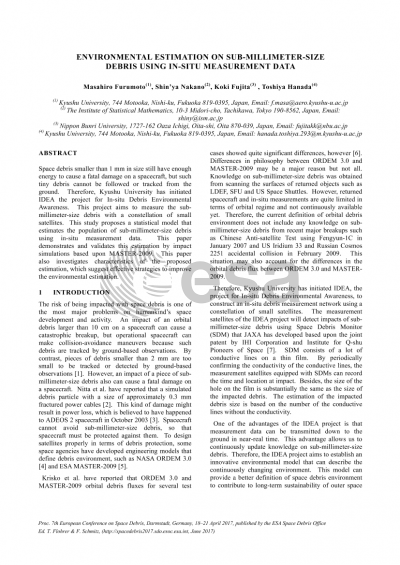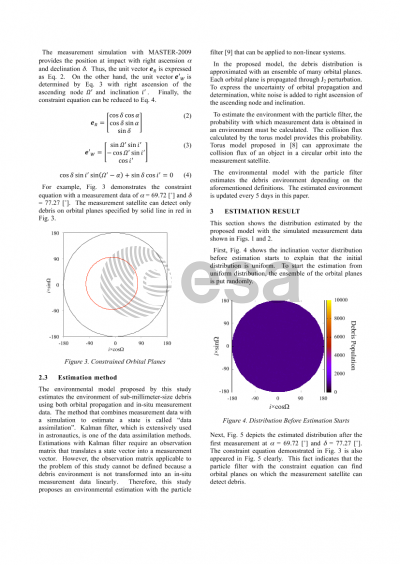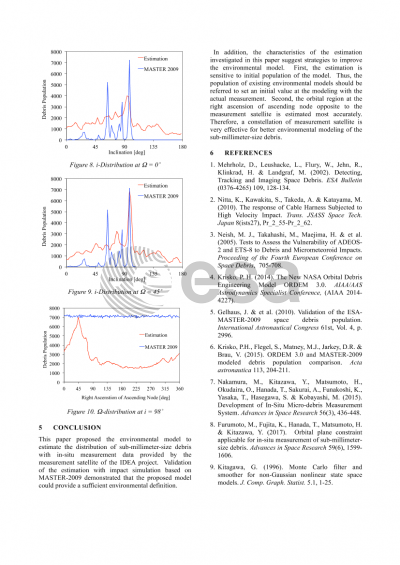Document details

Abstract
Space debris larger than 0.3 mm in size may cause a fatal damage on a spacecraft. However, operational spacecraft cannot avoid being hit with space debris smaller than 10 cm in size, be-cause it is difficult to determine their orbits accurately. In addition, space debris smaller than 2 mm cannot be observed from the ground. Therefore, knowledge on sub-millimeter-size debris should be incorporated in design of spacecraft to minimize the damage due to such tiny debris.
Kyushu University has initiated IDEA the project for In-situ Debris Environmental Awareness. This project aims at a prompt and clear understanding of the current and future sub-millimeter-size debris environment in the low Earth orbit region. For this purpose, this project proposes to deploy a group of micro satellites, which conduct in-situ and near real-time measurements of sub-millimeter-size debris, into any orbital regimes to be monitored. This study aims at a dynamic model that can occasionally be updated based on measurements of sub-millimeter-size debris in the actual environment. This dynamic model will provide a better definition of the current space debris environment to contribute to safe and secure space activities.
The measurement satellite of the IDEA project records only the position where it collides with a piece of debris, and the satellite doesn’t measure the velocity vector. Hence, the orbit of the debris cannot be determined directly. In the previous study, the authors have found two orbital characteristics of orbit on which debris can contribute to the collision flux into a measurement satellite. First, the orbits of debris detected through in-situ measurements are constrained by a simple equation. Second, a torus model describes the collision flux approximately and collision flux depends on the angle between two orbital planes of the measurement satellite and the debris.
This study proposes a statistical method to estimate population of sub-millimeter-size debris using in-situ measurement data from IDEA satellites. Statistical state estimation using both of simulations and measurements is called data assimilation. The proposed method uses a particle filter that is one of the data assimilation methods applicable to non-linear systems. Orbital plane constraint and approximated collision flux derived by the previous study are applied to estimation method. This study verified the proposed method in the two simulations. First, the authors generated virtual measurement data by simulating collisions in the situation that many pieces of debris are in one specific orbital region. Then, the proposed method estimated the environment with this measurement data. The estimated environment can explain well the given environment in both terms of number and distribution of debris. Second, this study used the impact data simulated by MASTER 2009 as the measurement data and compared the environment estimated by MASTER and the proposed method. The result of this comparison shows how accurately the in-situ measurement with one satellite can provide the definition of sub-millimeter-size debris environment.
Preview






